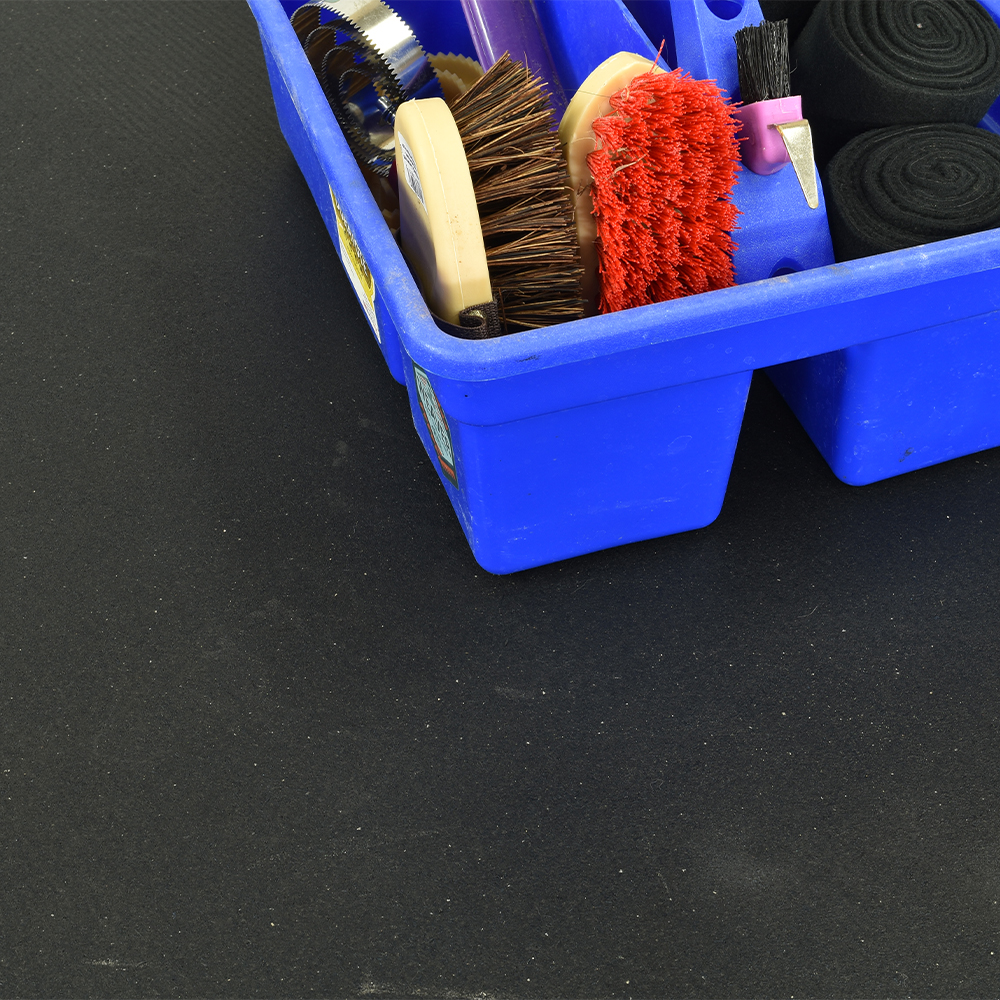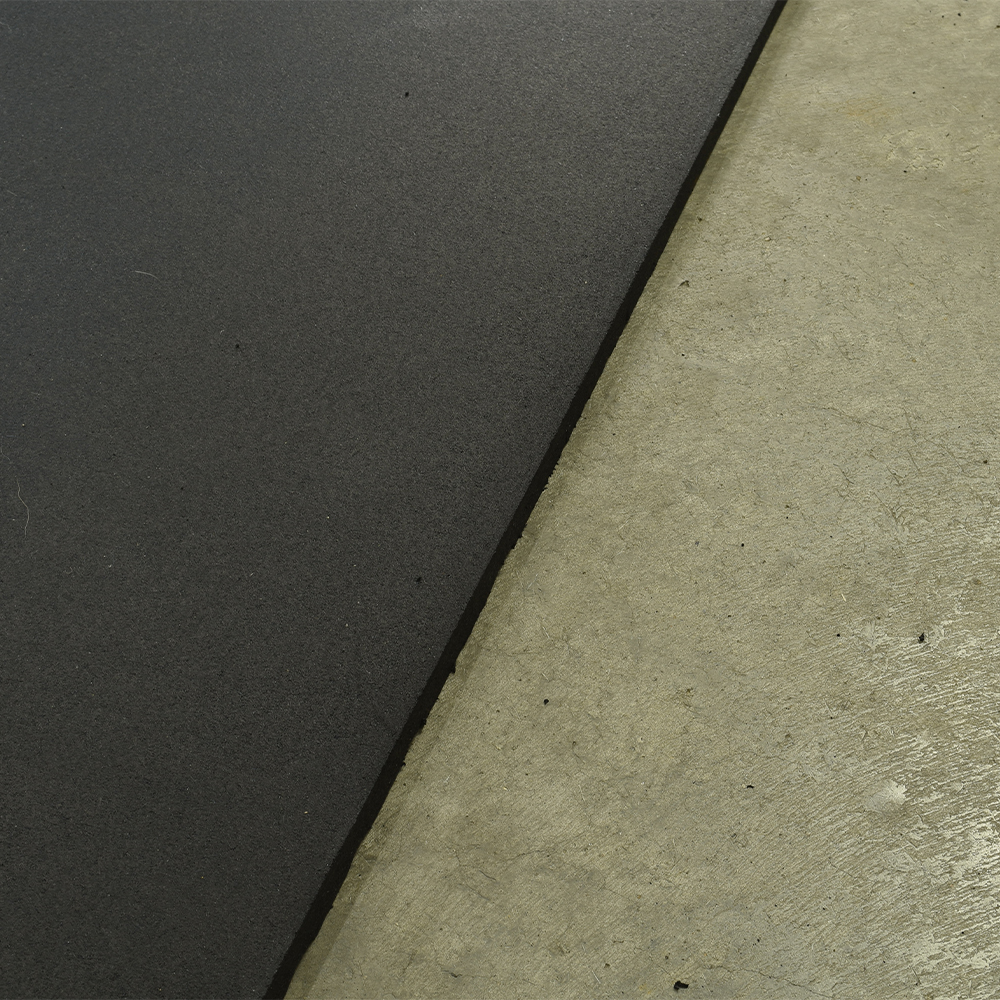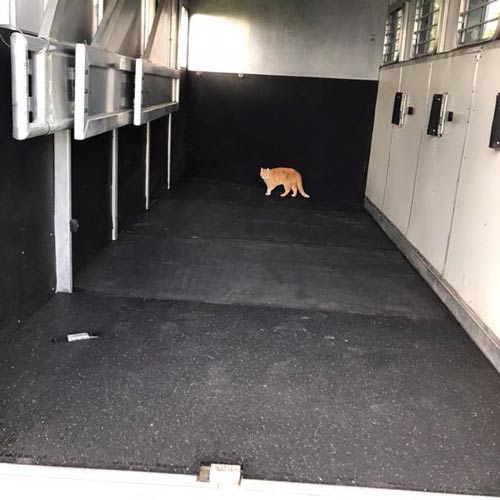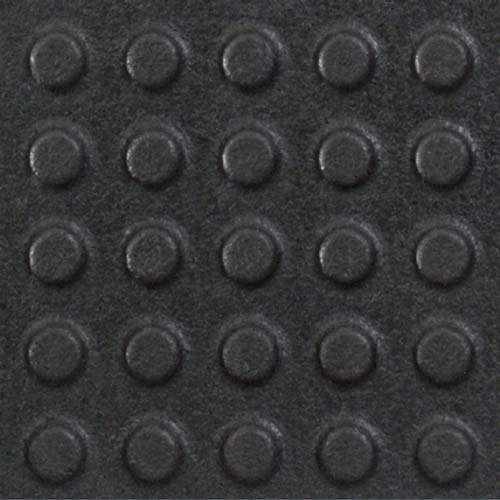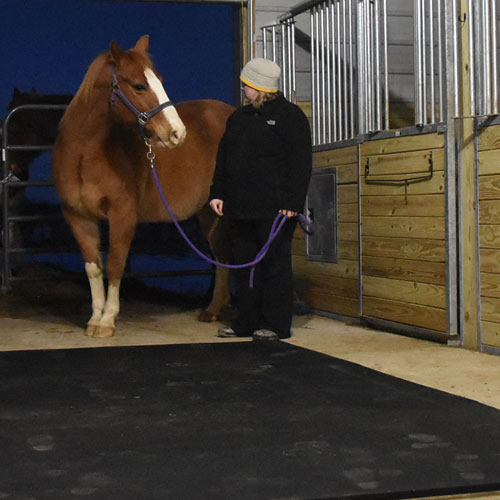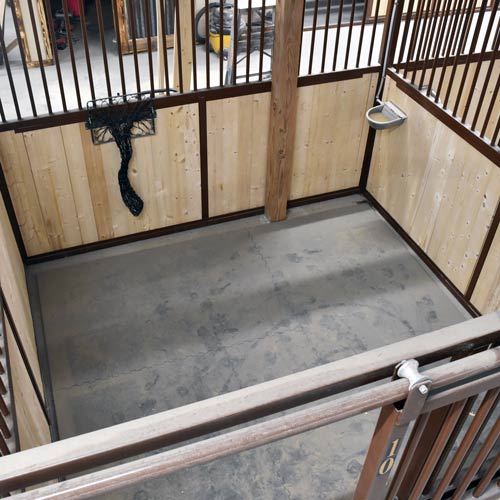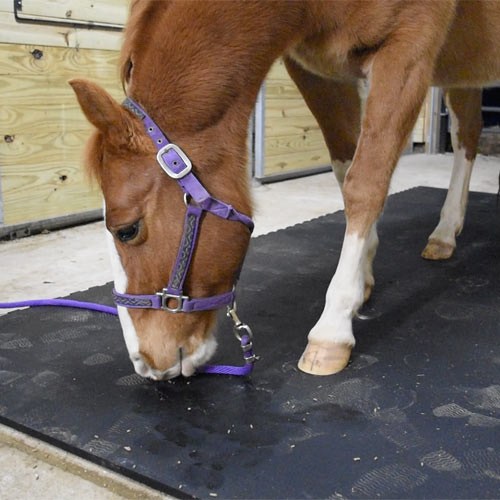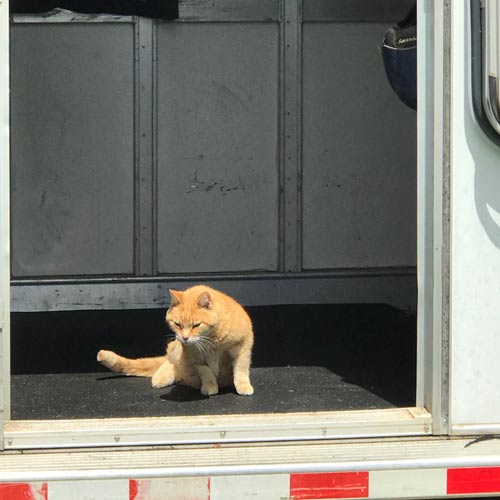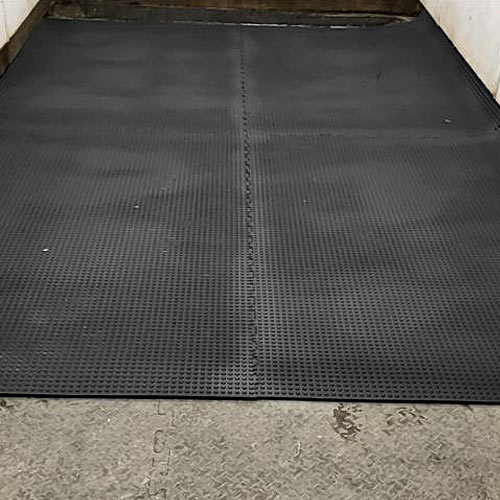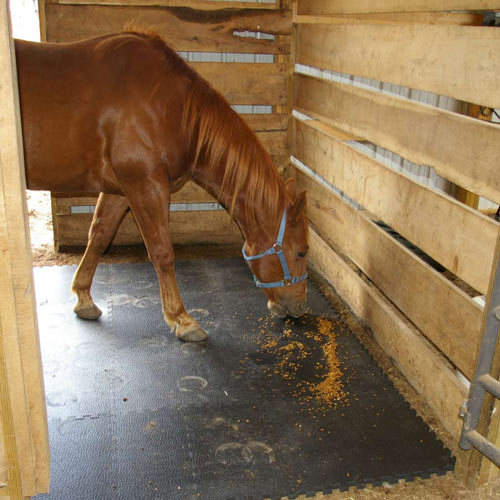Rubber Horse Stall Flooring Systems - Why Are They So Important?
Related Product: Smooth Top Straight Edge Horse Stall Mat 3/4 Inch x 4x6 Ft.
An ideal horse stall floor should be durable, easy on the horses' feet and legs, dry, odor-resistant, skid-resistant, low maintenance, and easy to clean.
When you consider that a 1,000-pound horse produces more than 30 pounds of feces and almost 2 1/2 gallons of urine each day, ''dry and clean'' can be tricky to maintain. That's where proper drainage and floor surfacing can play a big role. Water-resistant or waterproof floors must be sloped to allow for drainage, and bedding is often used to soak up the rest of the urine. Porous floors allow the urine to seep away through a sand, gravel, or crushed stone foundation.
Rubber or plastic grid mats, while expensive, provide all of the necessary requirements when used in conjunction with a compacted subfloor and topped with another material such as soil. This combination allows for drainage, prevents damage and wear from pawing, and will not retain bacteria-laden odors that can cause respiratory problems in horses.
Impervious Horse Stall Flooring Systems
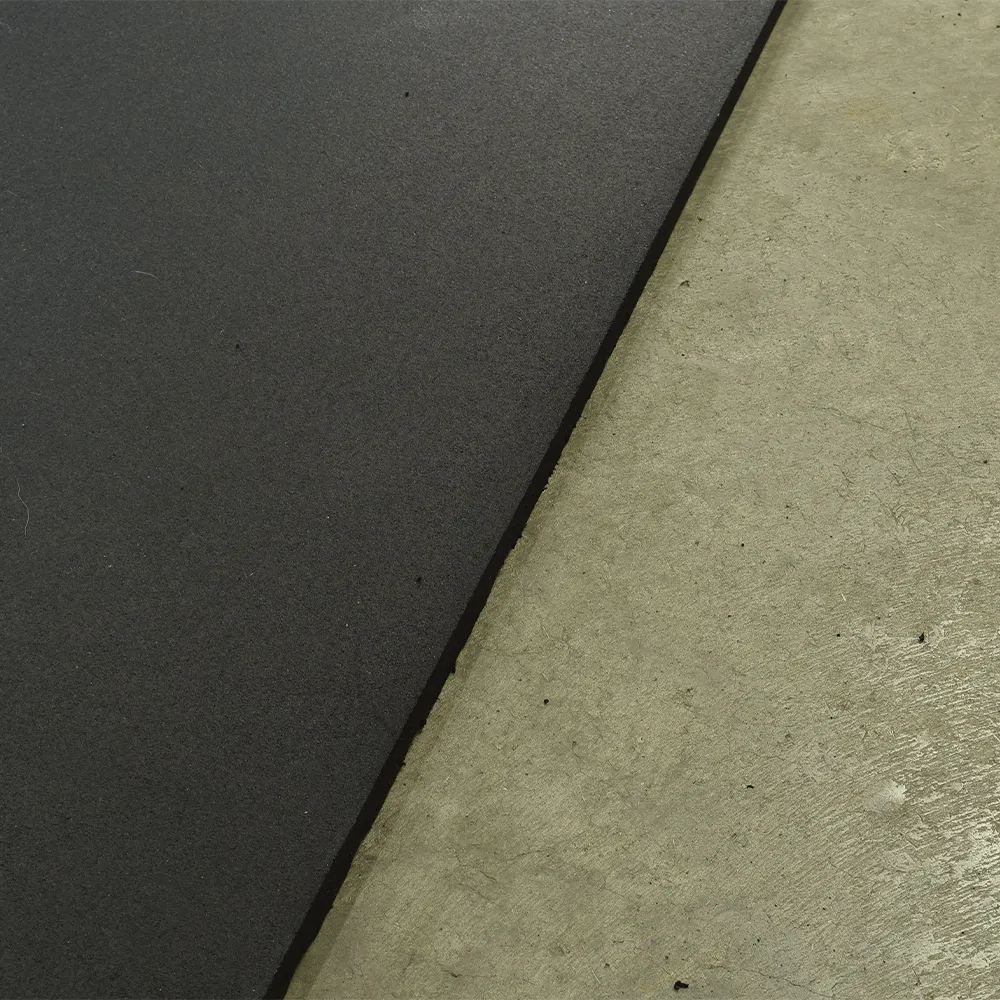
If you don't have the funds to create this complex, but highly-effective, stall flooring system, rubber stall mats may just be your answer. Solid rubber mats are extremely durable and can reduce or even eliminate the need for bedding to provide a cushion. They also provide solid footing, a long life span, low maintenance, and easy cleaning. Installed over an even, compacted surface, rubber horse stall mats should be textured on top for grip and grooved on the bottom to prevent moisture from becoming trapped. They can have straight or interlocking edges, but keep in mind that straight-edged mats may be difficult to keep in place and, in some cases, may need to be anchored to the floor. Rubber stall mats are easy to clean, but take care not to damage the surface if using a pitchfork.
Other solid surfaces, such as concrete or asphalt are durable, low maintenance, easy to clean and disinfect, and will not retain odors. However, they are hard on the horse's legs, can retain moisture, and may discourage laying down, therefore, increasing the need for bedding or rubber matting. These hard, solid surfaces do add a unique benefit in that, in good condition, they are rodent-proof. Improper installation can cause cracking, chipping, and sanitation problems due to urine getting trapped in surface irregularities.
Porous Stall Flooring
Porous flooring materials such as topsoil, clay, and sand are easy on the legs and are nonslip, but lack durability and can be hard to clean, disinfect and maintain.Each of these flooring solutions needs to be replaced frequently, offsetting the initial benefit of low pricing. While topsoil and sand can absorb wetness, clay is questionable in that category. Although topsoil and clay do absorb moisture, they can also retain it too long and may freeze hard during the winter. Sand and clay both serve as noise buffers but vary greatly in their effects on horsefeet. Clay keeps hooves moist while sand has a drying effect.
Two other common flooring options for horse stalls are wood and a road base mix. Wood is easy on the legs and warm to lie upon. Rough wood has good traction but can become slippery when wet. It also has a high initial expense, can be prone to insect and rodent damage, and must be checked often for signs of wear. Wood absorbs odors and bacteria and is difficult to clean due to its porosity.
Road base mixes vary greatly in size of particles, but are generally made primarily of limestone or granite - the smaller the rocks the better. It is easily leveled and compacted and provides good drainage, but can become hard and unforgiving much like concrete.
Horse Barn Aisle Flooring
Your horses' comfort and safety don't stop at the stall. It extends to the barn alleys and wash areas and, depending on the layout of your barn, may even include the feed and tack rooms. Much like the stalls, aisles should be durable, dry, skidproof, and easy to clean. Wide aisles used for exercising horses should have a sandy footing much like that of a riding arena. Smaller aisles, where horses are simply walked to and from their stalls should be treated much like the stalls themselves. The exception is, that alleyway floors should always redirect water instead of absorbing it. Sloping is critical and drains are recommended along the sides. Once again, grid mats are a top choice if you can afford it.Another strong option for aisles is rubber paver tiles, which provide excellent shock absorption and make it easy to control dust and bacteria at a much lower cost than traditional pavers which can harbor bacteria. While the aesthetic value of pavers is hard to beat, soil upheaval and/or poor installation of any paver surface can result in uneven surface and tripping hazards. Solid rubber or rolled rubber mats eliminate the concern over uneven surfaces, assuming they are installed over a properly leveled and compacted surface. All other forms of flooring leave holes in one or more of the essential components of a proper horse barn aisle.
Wash Bay Flooring Mats
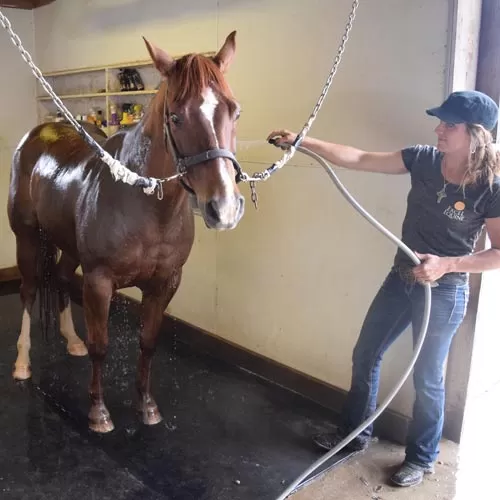
When considering flooring for your equine wash bays, make sure the floor does not get slippery when wet and is impervious to water. Drains and grates are essential. The best wash bay flooring materials are rough concrete, textured rubber mats over concrete, and sealed large aggregate asphalt. Again, the floor should be sloped toward a drain that is away from where the horse will be standing as drain covers may cause a safety concern.
When it comes to horse stall flooring, you get what you pay for. A little extra investment in time and materials upfront can make for a happy and healthy relationship for years to come between you and your horse.
